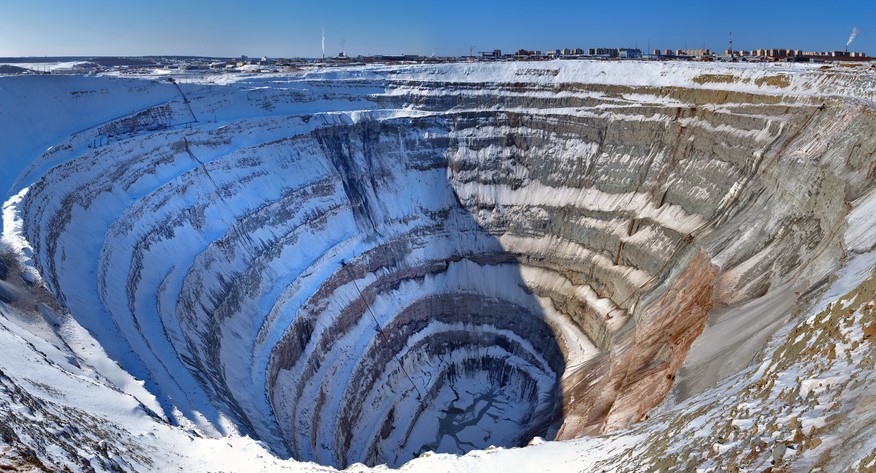A spate of launches has earmarked transition metals as a hot topic within ETFs, yet it falls to fund selectors to assess the value added by commodities as thematic exposures, their role in portfolios and even their ESG credentials before adding metals to their sustainable allocations.
BlackRock – which this year launched copper mining, ‘essential’ materials and lithium and battery ETFs – warned the metals are needed for the “monumental” shift to green energy have been greatly underestimated.
In fact, the world’s largest asset manager said the growth of renewable energy, electric vehicles and battery storage will double collective demand for copper, rare earth elements, aluminium, lithium and cobalt by 2040.
“The demand for metals and materials is poised to surpass all prior estimates,” BlackRock said in a report in October.
Evy Hambro, global head of thematic and sector investing at BlackRock – and co-manager of the BlackRock World Mining Trust – added the energy transition risks being hindered without additional funding being funnelled into metal and mineral extraction.
“If people do not give this sector a chance, then the energy transition is going to be impeded by the scarcity of materials to build everything required,” he said.
“This energy transition is starting to expose some weaknesses in that kind of complacent attitude.” Hambro noted while clean energy stocks have typically carried lofty valuations, “the further you get away upstream from the renewable power companies, the lower the multiples go”.
This valuation mismatch and momentum gathering in the transition commodities narrative have prompted mining equity ETF and exchange-traded commodity (ETC) launches from the likes of WisdomTree, Global X and Legal & General Investment Management (LGIM) in recent years, with BlackRock, UBS Asset Management and Sprott Asset Management entering the space in 2023.
Any takers?
Responding to BlackRock’s trio of launches, Aaron Bright, assistant portfolio manager at IG, previously said the products offer “some excellent qualities and niche exposures” which will be “very relevant to investors keen to access the decarbonisation megatrend”.
The copper miners ETF, in particular, he said could “be like buying spades in a gold rush” with copper demand expected to double by 2050; however, his firm would not be allocating due to the ETF’s thematic nature.
Alex Funk, CIO of Schroder Investment Solutions, identified decarbonisation as one of his firm’s three ‘Ds’ to drive the macro agenda over the coming decade, with a lack of metal supply a key concern.
“There is a structural investment in commodities that is required over the next decade but also to sustain the transition for some fossil fuel companies,” he said. “Therefore, we like commodities within that space.
“The energy transition is a theme we play in two ways. One of which is to have exposure to the commodities that will have a structural tailwind off the back of that.”
New risks emerge
However, drilling down into what makes these products tick – at least on the ETF side – suggests investors may be taking on unintended risks.
For instance, these ETFs as with other thematics capture a narrow group of stocks – sometimes as few as 30 names – with some fund selectors believing this exposes them to unrewarded volatility.
Peter Sleep, senior investment manager at 7IM, said: “This holds true for these transition ETFs, but at least the big mining companies have things like a viable business model, profits and cashflows that were missing from some of the companies in thematic ETFs that came out in 2020/2021.
“I wish I could say this about all the mining companies in these ETFs. When you look in the weeds, you may find companies that look a lot more speculative.”
Sleep added transition metal ETFs also introduce new risks not as prevalent in the existing thematic roster.
“Many older thematic ETFs bought companies operating in developed markets. Many mining companies carry a lot of country risk,” he said.
An example of this is First Quantum, a Panama-focused copper miner held by several transition and battery ETFs, which saw its share price halve in October, with the mine it spent years and billions of dollars to bring online now on the brink of closure following ongoing blockades of a key port.
The compromise for reducing these idiosyncratic risks is holding more generalist mining operators, which some including the iShares Copper Mining UCITS ETF (COPM) do.
“The trouble with a narrow theme like copper miners is that there are not enough profitable copper miners to create an index so you end up with a lot of other stuff,” Sleep continued.
“For instance, the biggest component in the ETF, with a 10% weighting, is BHP whose core business is iron ore.”
Other components of the ETF include Vale, Glencore and Newmont, whose core businesses are in iron ore production, coal and gold, respectively.
The obligatory ESG
Lastly, the crossroads between mining companies and ESG may be a tired discussion, but it remains an important one to square, especially for professionals explaining their allocations to sustainability-conscious retail clients.
Robert Eccles, professor at the Said Business School, Oxford University, argued the energy transition is littered with trade-offs and current mining operations are just one such example.
“Electric vehicles require cobalt and most of it comes from the Democratic Republic of Congo, which uses child labour to mine it,” he said.
However, even pragmatic ESG investors will draw their own moral lines between operational realities and unacceptable controversies.
An example might be the activities of copper mining company Ivanhoe – currently a top holding in several copper miner ETFs – and its colourful chairman Robert Friedland, also known as ‘Toxic Bob’.
The Canadian Centre for Policy Alternatives said in 2001 Ivanhoe ran a joint venture with the “Burmese military dictatorship”, reliant on “forced labour”.
The report said: “Here is a Canadian mining investor linked to major environmental disasters and mercenaries joining with a military junta that killed 10,000 people in 1988 – to crush a student uprising – and has turned Burma into a vast slave labour camp, as well as the world's leading heroin exporter.”
While a specific incident, this is just one of many examples of unsavoury collaborations between resource extraction companies and problematic political entities.
For instance, until forced to close by Russia’s invasion of Ukraine last year, Norilsk Nickel – founded out of what was previously the NKVD-run Norillag gulag and also the perpetrator of a 17,500-tonne diesel spill in Siberia in 2020 – had its own ETC issuing arm offering copper, cobalt and even electric vehicle metals ETCs.
Despite some worthy health warnings, the transition metal ETF and ETC roster continues to fill out in Europe.
Time will tell whether these strategies can allure investors looking to capture the clean energy value chain, though eventual economic recoveries and pivots by central banks may be supportive to valuations in coming years.
This article first appeared in ETF Insider, ETF Stream's monthly ETF magazine for professional investors in Europe. To read the full edition, click here.






